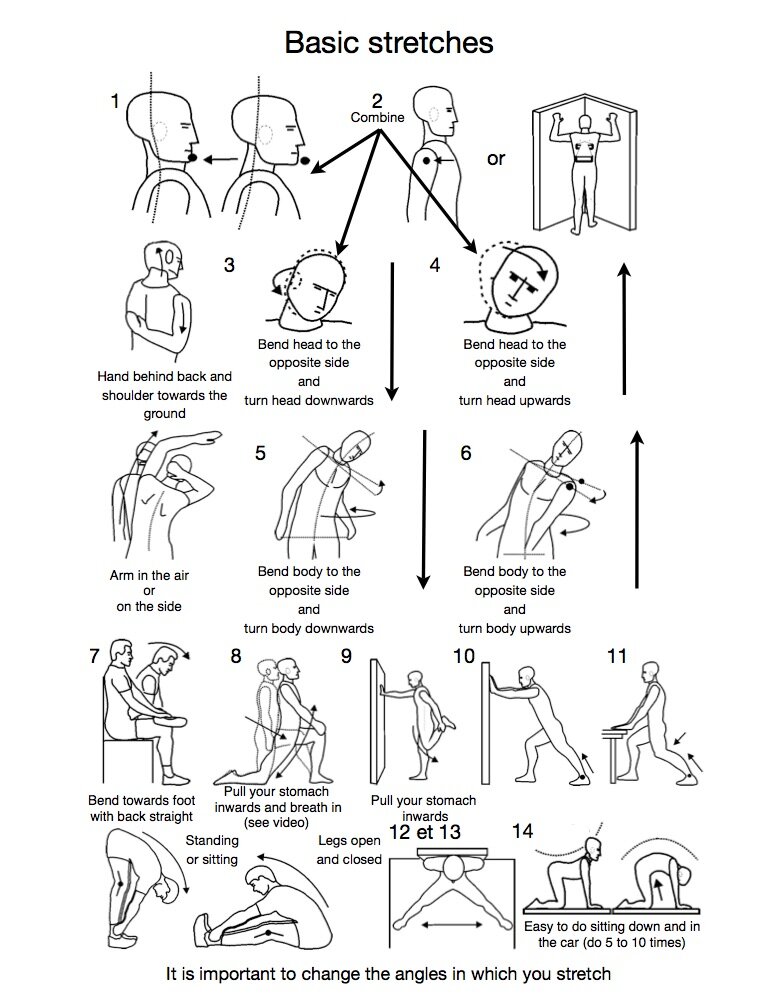Micropauses

The objective of taking micropauses is to reduce tissue fatigue and optimize blood circulation. This helps to prevent injuries to the tissues thus minimizing the Fatigue-Injury-Pain cycle.
When a person takes enough micropauses, he or she can reduce the negative consequences of different stressors:
•Overuse
-Repetitive work
-Sports and leisure activities
-Gardening
-Using Computers
-etc.
•Prolonged stretching of tissues
-Office work (prolonged sitting)
-Prolonged standing
-Driving
-etc.
•Vibration
-Using construction or maintenance tools
-Drill
-Lawn mower
-Vacuum cleaner
-etc.
-Driving a truck or bus
-etc.
The frequency of micropauses is extremely important. Unfortunately, an ideal frequency does not exist. Many factors come into account:
•The activity that the person is doing
•Posture
•The tools that a person is using
•How tired a person is
•Former injuries
•Even the weather and atmospheric pressure can influence how many times a person should stretch or change positions during the day.
Some advice and tricks:
•Use the basic stretches to know what to do during a micropause.
-Do not forget to sometimes vary the angles of the stretches.
•Take at least a micropause in the morning and in the afternoon, no matter what activity the person is doing.
•If every time the person takes a micropause, he or she feels a lot of tension, the person must increase the frequency of the micropauses.
•When a person is in a vehicle, he or she should rock their pelvis back and forth (progressively further each time) 5-10 times every 15-30 minutes (like illustrated in image 14, but obviously seated).
•When a person is in a seated position, he or she can easily do tne stretch # 7 of the basic stretches.
•Stretching the shoulders backwards (image 2) can easily be combined to the stretches of the neck (images 1, 3 and 4).
•When a person is doing a task that allows him or her to change position (like speaking on the phone), the person must change position as often as possible.
•When a person is in a standing position, he or she must take the habit of contracting their abdominal muscles (pull in their stomach) to stabilize the lower back and rest the passive structures (e.g.: discs and ligaments).
•The length of the stretch can be variable, but benefits can be felt after as little as 5-10 seconds.
•The use of a massage tool during micropauses can also help to rest and drain the tissues. (e.g.: massage roller)


